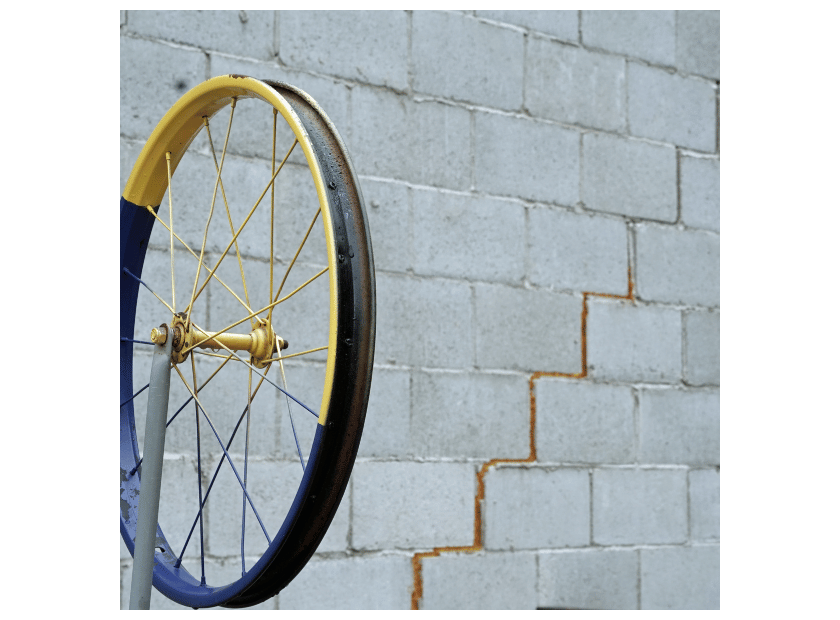Selecting the Ideal Rim Depth for Road Bikes: Expert Guidelines
Choosing the best rim depth for road bikes is an important choice that affects performance, aerodynamics, and rider comfort. The depth of the rim can also affect a bicycle's handling, speed, and stability as it moves in different riding conditions. This paper seeks to explain how to choose the right rim size using experts’ guidelines based on considerations such as riding style, terrain, and personal choices.
One will develop this understanding by exploring technical aspects of rim design related to cycling efficiency and thereby make appropriate decisions based on their specific concerns. Balancing aerodynamic advantage and practical maneuverability is vital to optimizing road bike performance.
In what manner does Rim Depth Affect Cycling Performance?
Rim depth impacts a bike’s aerodynamics, velocity, steadiness, and reactivity. Deeper rims improve aerodynamics, which results in high speeds on flat profiles, but shallower rims offer better control and are less affected by crosswinds.

Aerodynamics of Rim Depth Simplified
Cyclists who race on roads always consider rim depth's aerodynamics essential to boost their performance. By allowing smoother airflow around the wheel, deeper rims decrease wind resistance to increase flat terrain speeds. However, this comes with trade-offs in weight and handling, especially in windy conditions.
What you should know about Road Bikes when Choosing Rim Depth
The following are some factors that road cyclists should take into account when deciding on rim depth:
Type of Riding: Flatter courses benefit from deeper rims for speed, while hilly terrain may favor lighter, shallower rims for better climbing.
Ability to Handle Bike – Deeper rims can be more challenging to handle in crosswinds than shallow ones; hence, it is easy to control a bicycle fitted with the latter option if one is not experienced enough.
Weight: Normally heavier than their counterparts, deeper rims may affect acceleration and climbing capacity.
Cross Winds’ Effects over Different Rim Depths
Crosswinds severely affect bicycles fitted with deep-section wheels, significantly impacting their stability. While deeper sections are ideal for enhancing aerodynamics during optimum weather conditions, they become challenging to manage under such circumstances, thus making a rider uncomfortable because he/she cannot easily predict how the bike will react next. On the other hand, shallow wheels do not guarantee much stability. Still, they make riding more accessible during windy days at the expense of some advantages in terms of air dynamics.
Some Factors To Put Into Consideration When Selecting The Appropriate Wheel Depth
Choosing an appropriate wheel depth depends upon finding the right balance among aerodynamics, weight, handling, and terrain. This will determine how fast, stable, and overall efficient it can be for competitive racers and cycling enthusiasts.
Effects of Deeper Rim Profiles on Speed and Stability
Deeper rim profiles increase speed by reducing the drag forces that slow down cyclists because they are more aerodynamic. Nevertheless, heavier weights and wobbly behavior under cross winds are some trade-offs involved here. The main aspects determining these comprise wheel depth, wind angle, and rider expertise.
Comparing Flatter Section Rims to Deeper Ones in Road Biking
Shallower rims (often less than 30mm) perform well in this respect; their lighter weights and less compromise with wind aid in bettering their maneuvering capabilities, especially when climbing hills. Deep-section wheels (typically above 40mm) have superior aerodynamics for flat-out straight courses but could interfere with steering response rates or acceleration. Riding terrain, average wind conditions and rider preference is crucial in this comparison.
The Role of Rim Material in Rim Depth Selection
Rim material is essential to a wheel's overall performance and lifespan. Carbon fiber rims combine low mass with high rigidity to make them ideal for deep and shallow wheels, enhancing aerodynamic gain and climbing efficiency. However, the quality of material used in making rims, such as carbon fiber, depends on the resin qualities impregnated during the manufacturing process, affecting its strength-to-weight ratio.
How To Choose The Right Wheel Depth For What You Are Doing On A Bike
Choosing the correct wheel depth optimizes comfort or cycling performance for your particular activities, like racing or leisure riding, which may involve triathlons. It affects your bike’s aerodynamics, speed, stability, and maneuverability.

Performance Optimization In Triathlons Using Deep Section Wheels
Deep-dish wheels are perfect for triathlon biking, where athletes must go as fast as possible with the least effort. These factors must be considered during a triathlon.
Rim Depth: The best rim depth is between 50mm and 80mm, balancing aerodynamics and weight.
Weight: Getting lighter wheels helps with acceleration and going uphill, which is crucial in multiple terrains of triathlon races.
Wind Conditions: When calm, windy conditions can lead to using deep rims, while rider skills can help control crosswind effects.
Understanding Rim Depth Influences on Aero Dynamics
Rim depth impacts considerably on the feel of the bike against air flow, making it run faster on flat surfaces by minimizing resistance. Some essential factors that affect aerodynamics include:
Rim Shape: Bladed or toroidal shapes are more efficient at reducing drag than conventional shapes.
Surface Texture: Visible dimpling or ribbing will help lower the turbulence associated with airflow, the same way it does to golf balls.
Matching Front and Rear Wheel Depths for Balanced Performance
It is essential to have matching front and rear wheel depths to maintain control, especially in varied road conditions. For a well-rounded performance, consider these aspects:
Front Wheel: A slightly shallower front wheel is suitable for easy steering, specifically when dealing with crosswinds.
Rear Wheel: A deeper rear wheel provides optimal aerodynamics without significantly affecting handling.
Cyclists should select their wheel setup wisely based on these considerations to ride at optimum performance levels that align with their preferences and riding conditions.
Maximizing Aerodynamic Advantage with Carbon Fiber Wheelsets
Wheelsets made of carbon fibers represent today’s highest cycling technology because they offer unmatched aerodynamic efficacy over other alternatives. Circling lightness, strength, and velocity, many champions vote for them.

Exploring Carbon Fiber Advantages in Wheel Design
Carbon fiber is a remarkable choice for wheel design as it has a high stiffness-to-weight ratio, minimizing resistance without compromising strength and durability. Main benefits include:
Weight Reduction: Being lighter than conventional materials, carbon fiber allows for faster acceleration and climbing.
Aerodynamic Efficiency: Advanced manufacturing techniques allow the shaping of carbon fiber to achieve optimal aerodynamic profiles.
Vibration Damping: Carbon naturally absorbs vibrations, making the ride more comfortable and less tiring.
Improving Speed and Efficiency with Box Section Carbon Rims
Box section carbon rims combine aerodynamics with practicality. Unlike the deeper ones that were more concerned about their unique shape, box-sectioned models offer:
Improved Crosswind Handling: Less affected by crosswinds than the deeper ones; hence, it can be used at any time.
Weight Savings: Because they usually weigh less, they are efficient in uphill movements and other factors requiring much energy in triathlon running events.
Durability and Strength: Capable of withstanding uncertain terrains, these wheels provide a performance-reliability tradeoff.
The Role of Wind Tunnels in Testing Deep Section Wheels
Wheel aerodynamics depends on wind tunnel testing. Manufacturers can fine-tune wheel designs to reduce drag and enhance performance by replicating real-world conditions. Key findings from such experiments have been:
Drag Coefficient Analysis: Gives feedback on how different design changes affect air resistance rate.
Crosswind Stability: Evaluating wheel behavior under various wind angles to improve handling.
Performance Benchmarking: Comparing different wheel designs to determine the most efficient profiles under simulated conditions.
Q: For road bikes, why is rim depth significant?
A: Besides whether the bike will be affected by crosswinds, one should also pay attention to the rim depth of a wheelset.
Q: How does wind affect the selection of rim depths for road bike wheels?
A: A high-velocity side airflow can significantly destabilize deep sections with greater rim heights. You must consider this when choosing rim depths for your road bike.
Q: What makes carbon wheelsets preferable over other materials?
A: Carbon-fiber wheel systems are lighter and stiffer than traditional alloy wheels while providing superior aerodynamics, making them popular among riders looking for faster results.
Q: Does the rider’s weight impact their choice of rim depth for road bike wheels?
A: Heavier people may want shallower rims to stay stable and in control, while lighter ones may prefer deeper ones to improve their aerodynamics and increase speed.
Q: What should triathletes consider when selecting the appropriate bike rim depth?
A: Triathletes should consider factors like aerodynamics, low weight, and handling characteristics when deciding on an ideal depth for maximizing cycling performance during both stages of a triathlon.
Q: How do wheels perform on mountainous terrain with a depth of up to 60mm or more?
A: Aesthetics count most under these circumstances since such terrains demand lightweight wheels with good handling capabilities and excellent contact points between ground and tires—factors typically found in shallow-section rims.
Q: Is internal rim width something that matters when evaluating the overall performance of a road bike?
A: Internal rim width determines tire suitability and affects aerodynamics and handling. Therefore, choosing the correct internal rim width is essential to maximize performance.
References
——
Academic Journal on Sports Engineering: Articles from peer-reviewed journals that study the aerodynamics of different rim depths and their impact on cycling performance. These papers often provide empirical data and rigorous analysis.
Manufacturer Websites (e.g., Zipp, Mavic, Shimano): Official manufacturers' websites often contain detailed specifications, technology descriptions, and the intended use case for different rim depths. They might also include white papers or research findings related to their products.
Cycling Coaching Blogs: Experienced coaches and professional cyclists often share insights on how rim depth affects speed, handling, and performance in various conditions. These blogs can offer practical advice grounded in extensive personal and professional experience.


